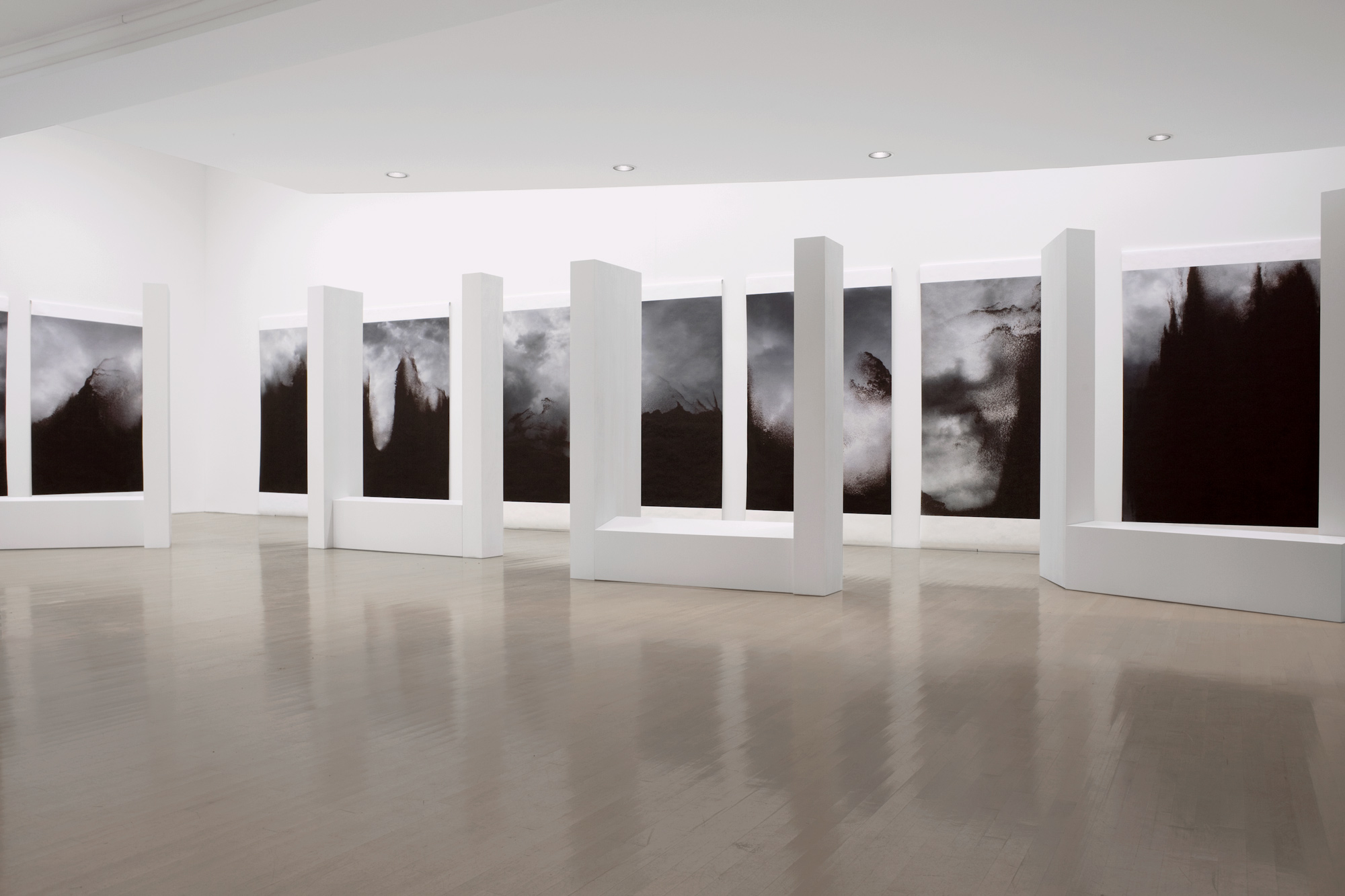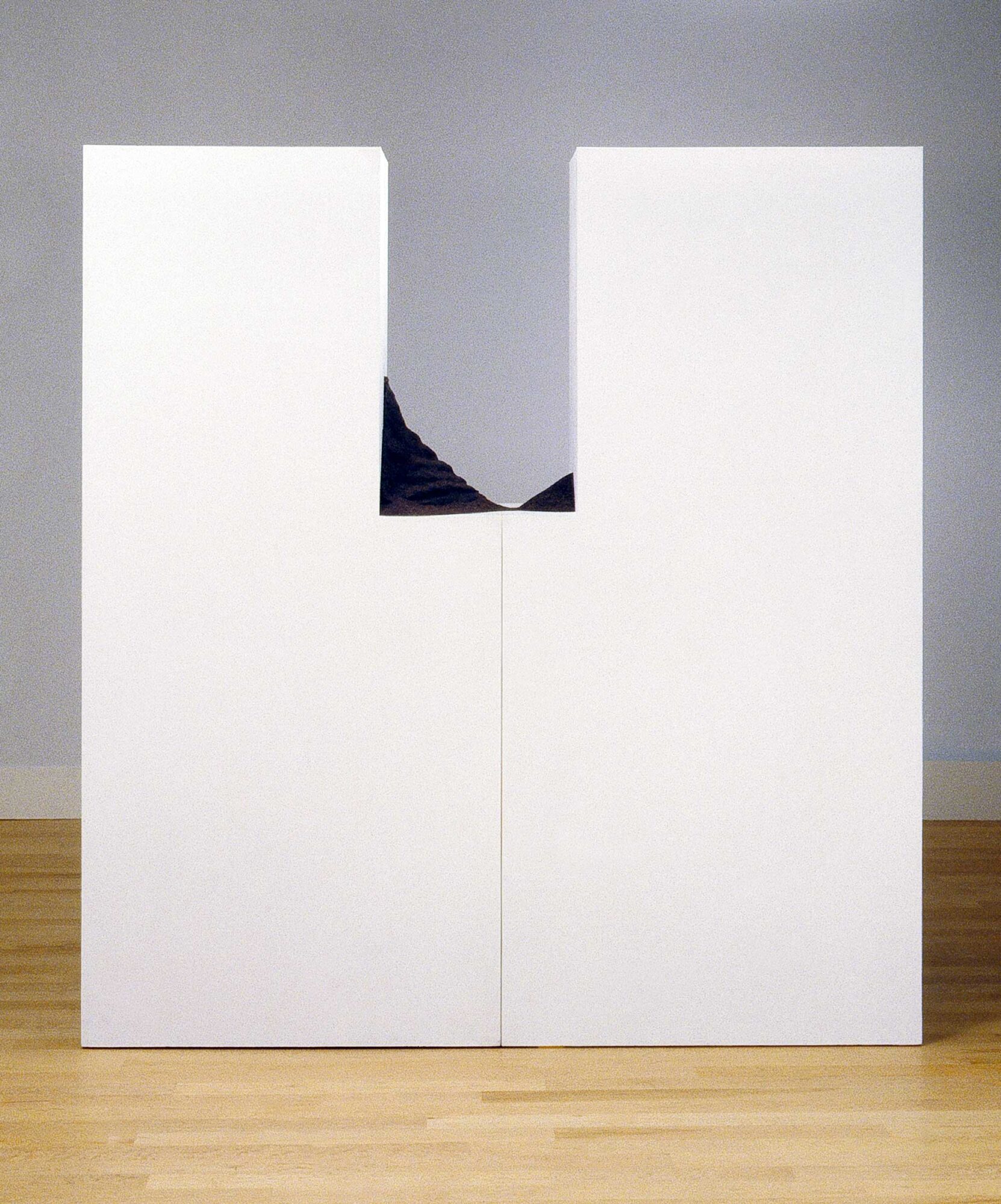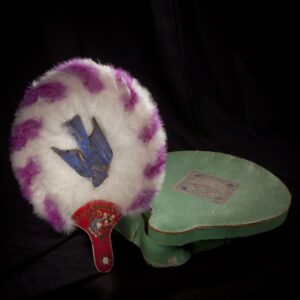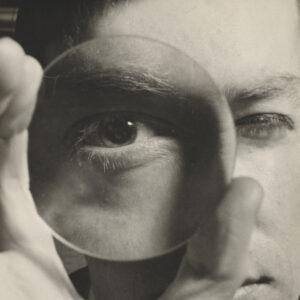Jocelyne Alloucherie (b.1947)

Jocelyne Alloucherie, Climats, terre de sang (Climates, Land of Blood) (detail), 2010
Ten scannophotographs, four architectural modules, wood, casein, lacquer, 152 x 240 cm each
Jocelyne Alloucherie is an installation artist whose works combine elements of sculpture, architecture, and photography. She studied at the École d’art at Université Laval from 1970 to 1973 and later at Concordia University in Montreal, where she received a master of fine arts in 1981. For over thirty years, she divided her professional life between a fruitful artistic practice and university teaching in Quebec City.
A native of Quebec, Alloucherie acknowledges the influence of her surroundings on her art. Her work resonates with Nordicity, or northernness: the greyness of mists and fogs, the flow of air in storms and whirlwinds, and the light carving bold shadows onto buildings. These evocative images permeate her refined and monumental works, such as her installation Dédale (Maze), 2013, which unleashes its dramatic power in the form of conceptual narratives composed of black-and-white photographs, video, and minimalist pillars.

In Œuvres de sable (Les Déserts no 3) (Sand Works [The Deserts No. 3]), 1999, from the series Les Déserts (The Deserts), Alloucherie seems to compose landscapes, at once harsh and fragile, by blowing onto small piles of red sand nestled in the crevices of imposing white monoliths. When she transposes her images onto large-scale digital prints or video screens, Alloucherie frames them with architectural elements that extend their three-dimensional presence. The installation Climats, Terre de sang (Climates, Land of Blood), for example, features large, U-shaped, white modules that structure the visual experience of the landscape images displayed on the walls. These pillars “as if by mimicry… resemble built frameworks. At the same time, they might obstruct the visitor’s view or, conversely, act as a viewfinder or framing device.”1
In the video installation Dédale, the artist draws inspiration from alleyways, backyards, and the hidden recesses of urban spaces—those remnants that form the backbone of our cities.2 This videographic triptych projects the calm and silence of unseen Montreal: the silhouette of a passerby, laundry hanging on a line, trees, and walls. The soundscape has eliminated the noise of cars, preserving only the whisper of rustling leaves, the chirping of squirrels, and the faint sound of muted human voices. Imposing white monoliths, reminiscent of those in earlier works, frame the images of this strange and captivating piece, which both distorts and elevates the urban spaces it depicts.
Alloucherie’s works sit at the intersection of sculpture, photography, and installation art and evoke subtle effects that play with contrasts: light and shadow, fullness and emptiness, robustness and fragility, the small and the monumental. This approach has earned her recognition both in Canada and internationally—a journey that began with her first solo exhibition in 1973 at the Musée du Québec (now the Musée national des beaux-arts du Québec). Countless solo and group exhibitions followed across the Americas, Europe, and Asia.3 Alloucherie has received numerous awards for her work, including the Governor General’s Award in Visual and Media Arts in 2000 and the Prix Paul-Émile-Borduas in 2002. She was also named a Member of the Order of Canada in 2008.

 About the Author
About the Author
 More Online Art Books
More Online Art Books
 Acknowledgements
Acknowledgements